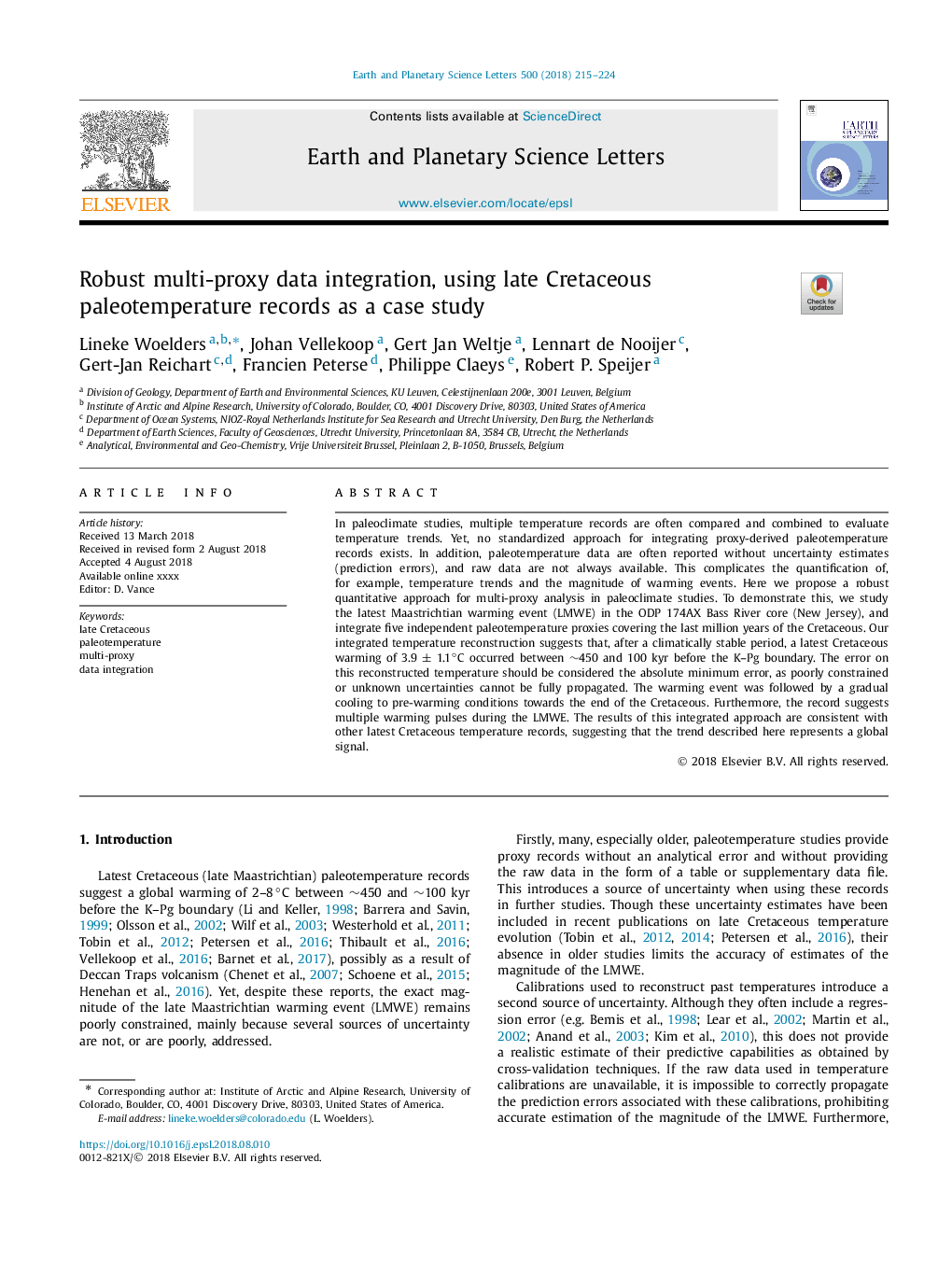| Article ID | Journal | Published Year | Pages | File Type |
|---|---|---|---|---|
| 8906669 | Earth and Planetary Science Letters | 2018 | 10 Pages |
Abstract
In paleoclimate studies, multiple temperature records are often compared and combined to evaluate temperature trends. Yet, no standardized approach for integrating proxy-derived paleotemperature records exists. In addition, paleotemperature data are often reported without uncertainty estimates (prediction errors), and raw data are not always available. This complicates the quantification of, for example, temperature trends and the magnitude of warming events. Here we propose a robust quantitative approach for multi-proxy analysis in paleoclimate studies. To demonstrate this, we study the latest Maastrichtian warming event (LMWE) in the ODP 174AX Bass River core (New Jersey), and integrate five independent paleotemperature proxies covering the last million years of the Cretaceous. Our integrated temperature reconstruction suggests that, after a climatically stable period, a latest Cretaceous warming of 3.9 ± 1.1â°C occurred between â¼450 and 100 kyr before the K-Pg boundary. The error on this reconstructed temperature should be considered the absolute minimum error, as poorly constrained or unknown uncertainties cannot be fully propagated. The warming event was followed by a gradual cooling to pre-warming conditions towards the end of the Cretaceous. Furthermore, the record suggests multiple warming pulses during the LMWE. The results of this integrated approach are consistent with other latest Cretaceous temperature records, suggesting that the trend described here represents a global signal.
Related Topics
Physical Sciences and Engineering
Earth and Planetary Sciences
Earth and Planetary Sciences (General)
Authors
Lineke Woelders, Johan Vellekoop, Gert Jan Weltje, Lennart de Nooijer, Gert-Jan Reichart, Francien Peterse, Philippe Claeys, Robert P. Speijer,
